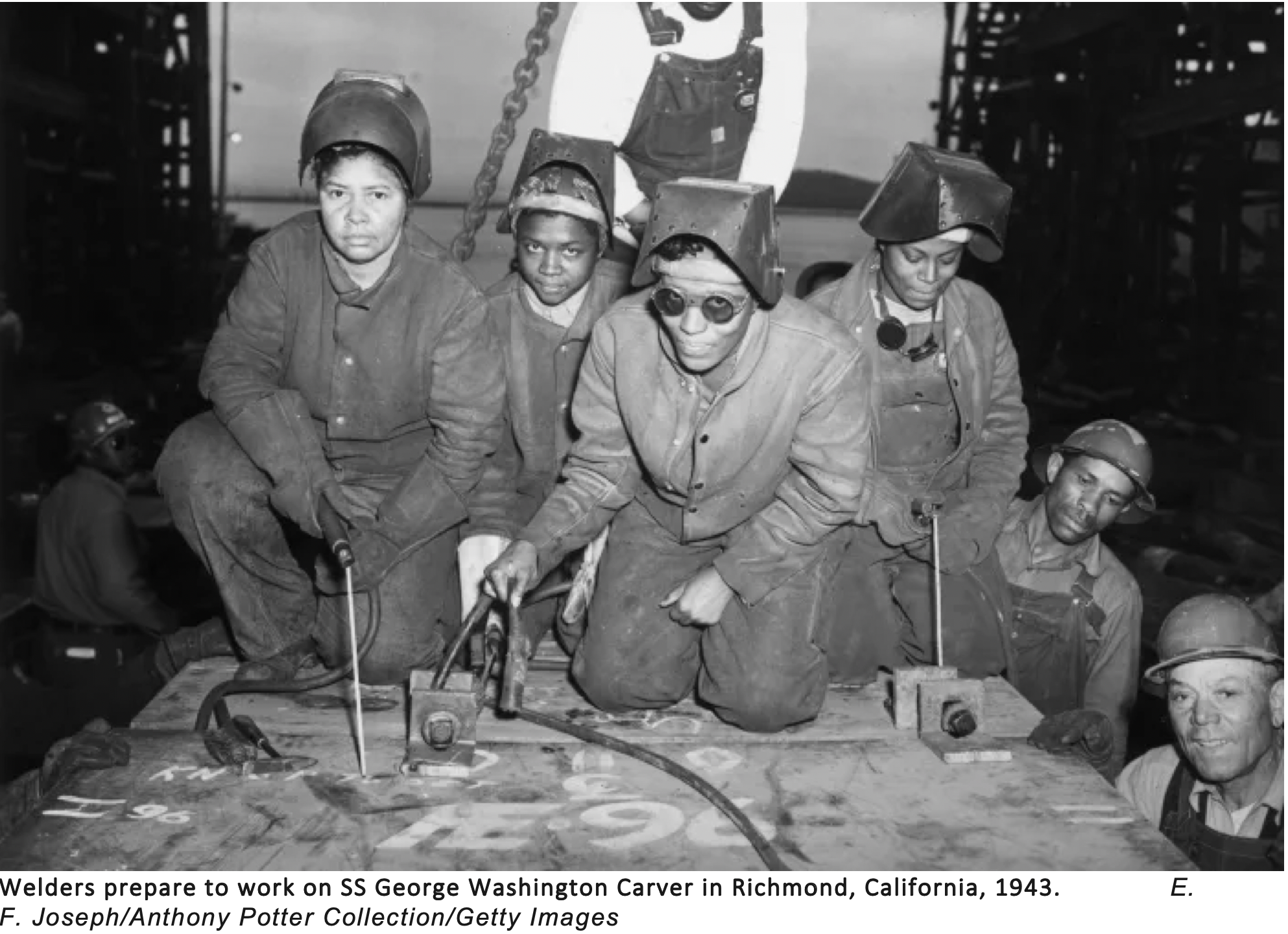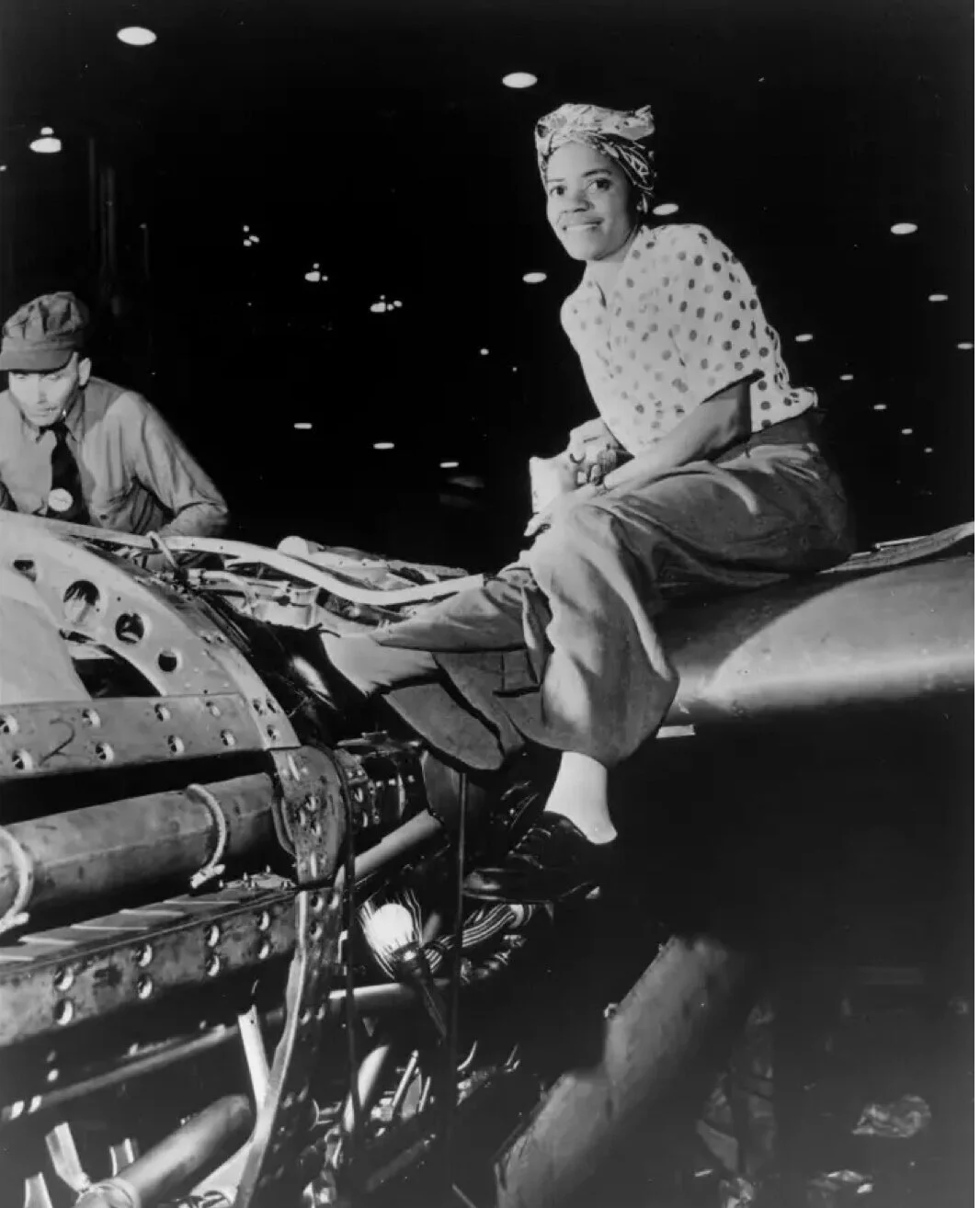The Desired Effect: Black "Rosies" Are the Original Women Who Wielded the Torch
For African American women, becoming a Rosie was not only an opportunity to aid in the war effort, but also a chance for economic empowerment. Already on the move as part of the Great Migration, they sought to leave behind dead-end, often demeaning work as domestics and sharecroppers.
“Black people were leaving the south anyway and fanning out across the country,” says Gregory S. Cooke, director of Invisible Warriors, a documentary on the Black Rosies. “The war gave the women a more pointed motivation for leaving and an opportunity to make money in ways Black women had never dreamed before.”
African American female riveter sitting on huge piece of machinery during WWII at Lockheed Aircraft Corp., 1942. Time-Life Pictures/Women's Bureau/National Archives/The LIFE Picture Collection/Getty Images
At first, finding war-related work proved difficult for many prospective Black Rosies, as many employers—almost always white men—refused to hire Black women.
“The war represented this incredible opportunity, but Black women really had to rally and fight for the opportunity to even be considered,” says Dr. Maureen Honey, author of Bitter Fruit: African American Women in World War II and emeritus professor of women's and gender studies at the University of Nebraska–Lincoln. “Many employers held out, attempting to only hire white women or white men until they were forced to do otherwise.”
That coercion came in the summer of 1941 when activists Mary McLeod Bethune and A. Phillip Randolph brought the widespread hiring discrimination to President Franklin Roosevelt, prompting the Commander-in-Chief to sign Executive Order 8802 banning racial discrimination in the defense industry. The order boosted Black women's entry into the war effort; of the 1 million African Americans who entered paid service for the first time following 8802’s signing, 600,000 were women.
The roles Black Rosies played in the war effort ran the gamut. They worked in factories as sheet metal workers and munitions and explosive assemblers; in navy yards as shipbuilders and along assembly lines as electricians. They were administrators, welders, railroad conductors, and more. (click here to read full article)


